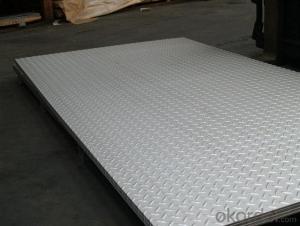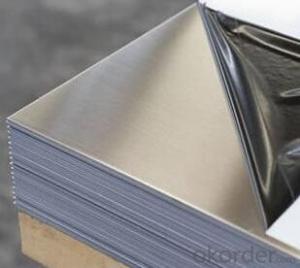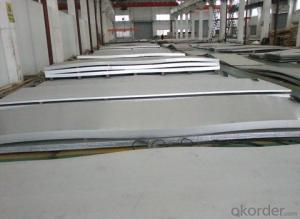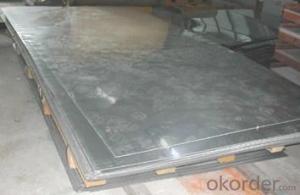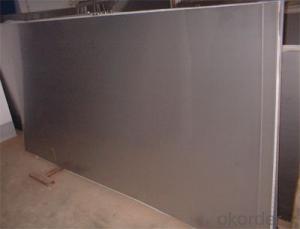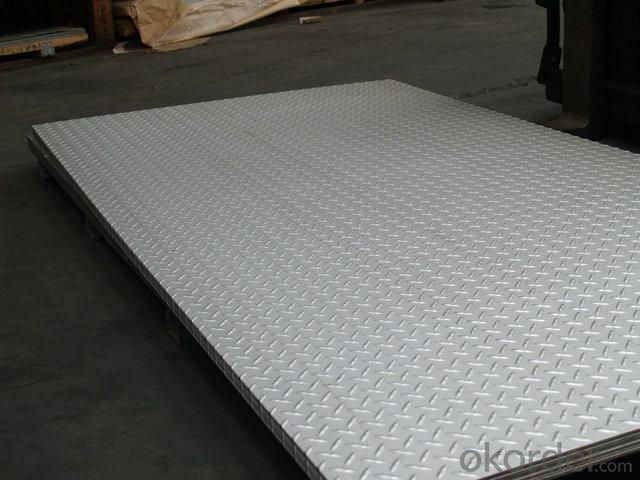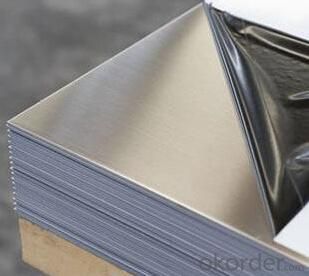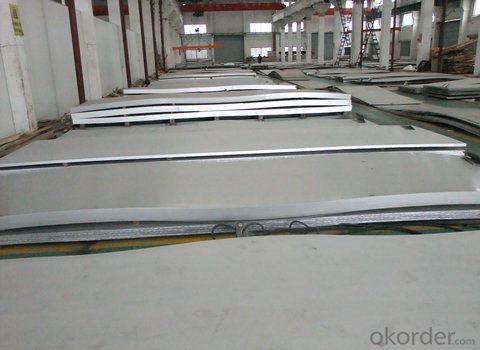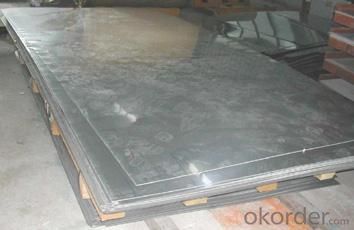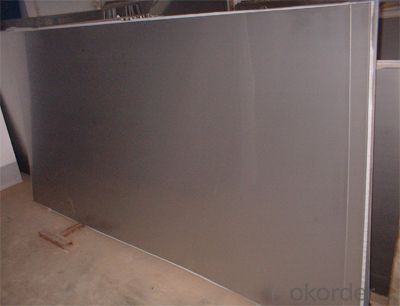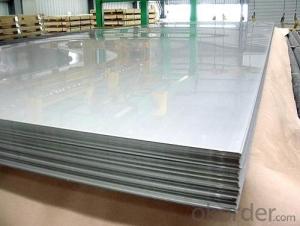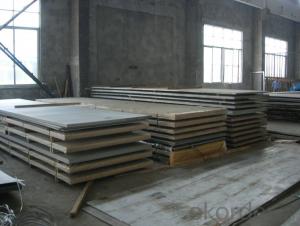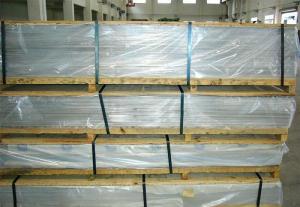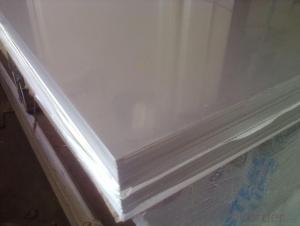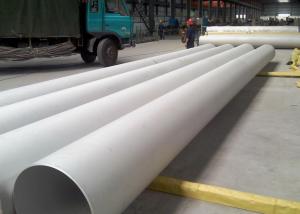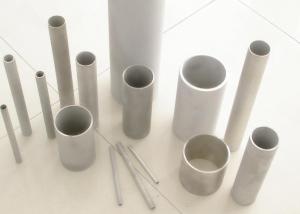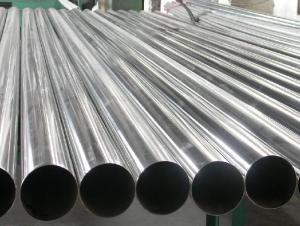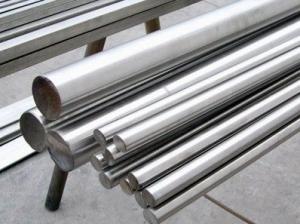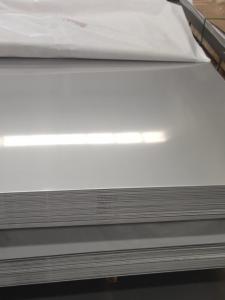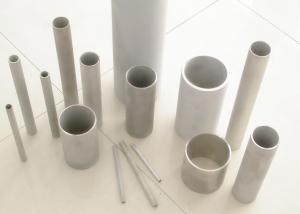Stainless Steel Sheet andPlate with Good Discount
- Loading Port:
- Shanghai
- Payment Terms:
- TT OR LC
- Min Order Qty:
- 10000 m.t.
- Supply Capability:
- 5000000 m.t./month
OKorder Service Pledge
OKorder Financial Service
You Might Also Like
Specifications of stainless steel
304 stainless Steel Plate
stainless steel plate,steel sheet,steel plate
Standard: ASTM,GB,DIN,JIS,ISO,EN,etc.
TISCO stainless Steel Plate 304/NO.1 finished
stainless steel plate,steel sheet,steel plate
Standard: ASTM,GB,DIN,JIS,ISO,EN,etc.
Delivery short and low cost advantage.
Description of stainless steel:
stainless steel plate,hot rolled stainless steel plate,cold rolled stainless steel plate,stainless steel sheet,steel sheet,sheet
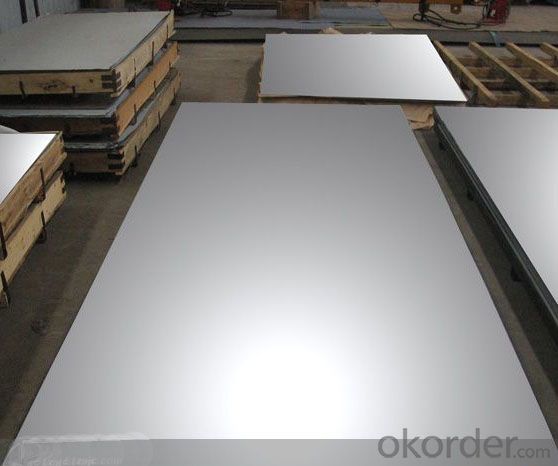
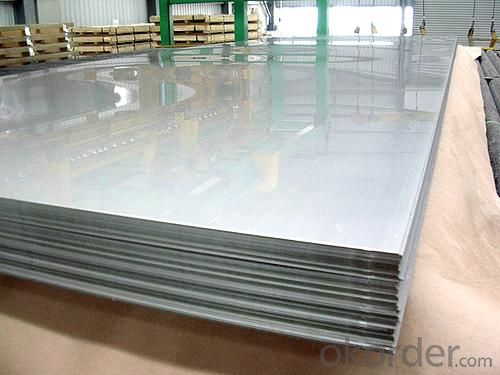
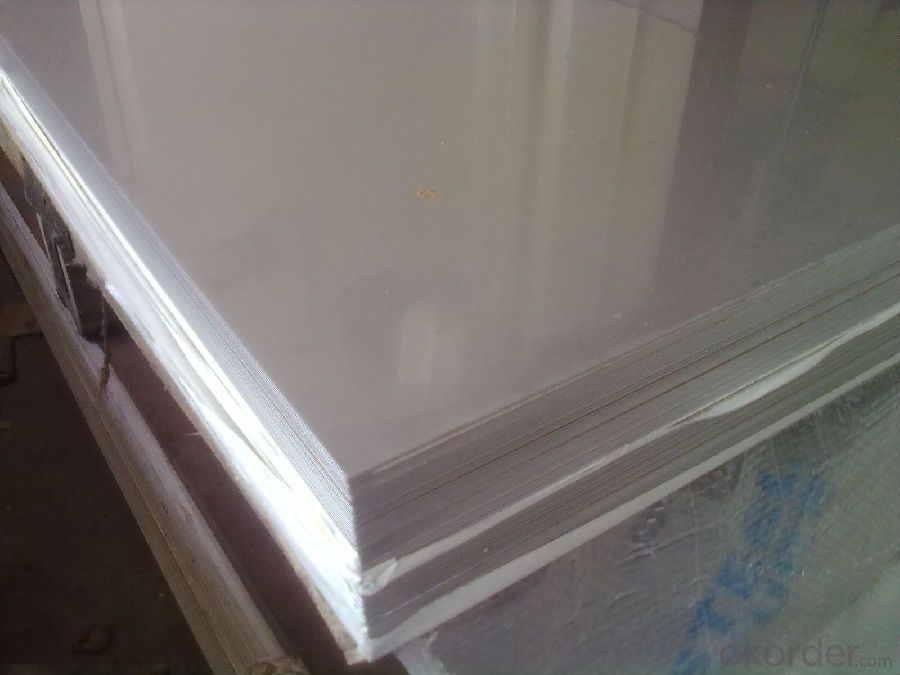
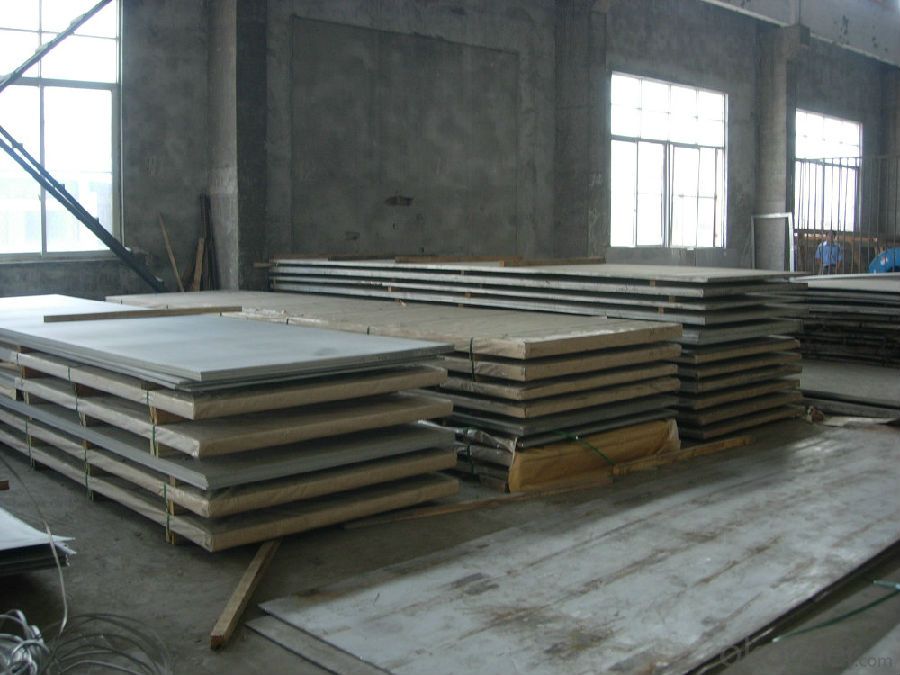
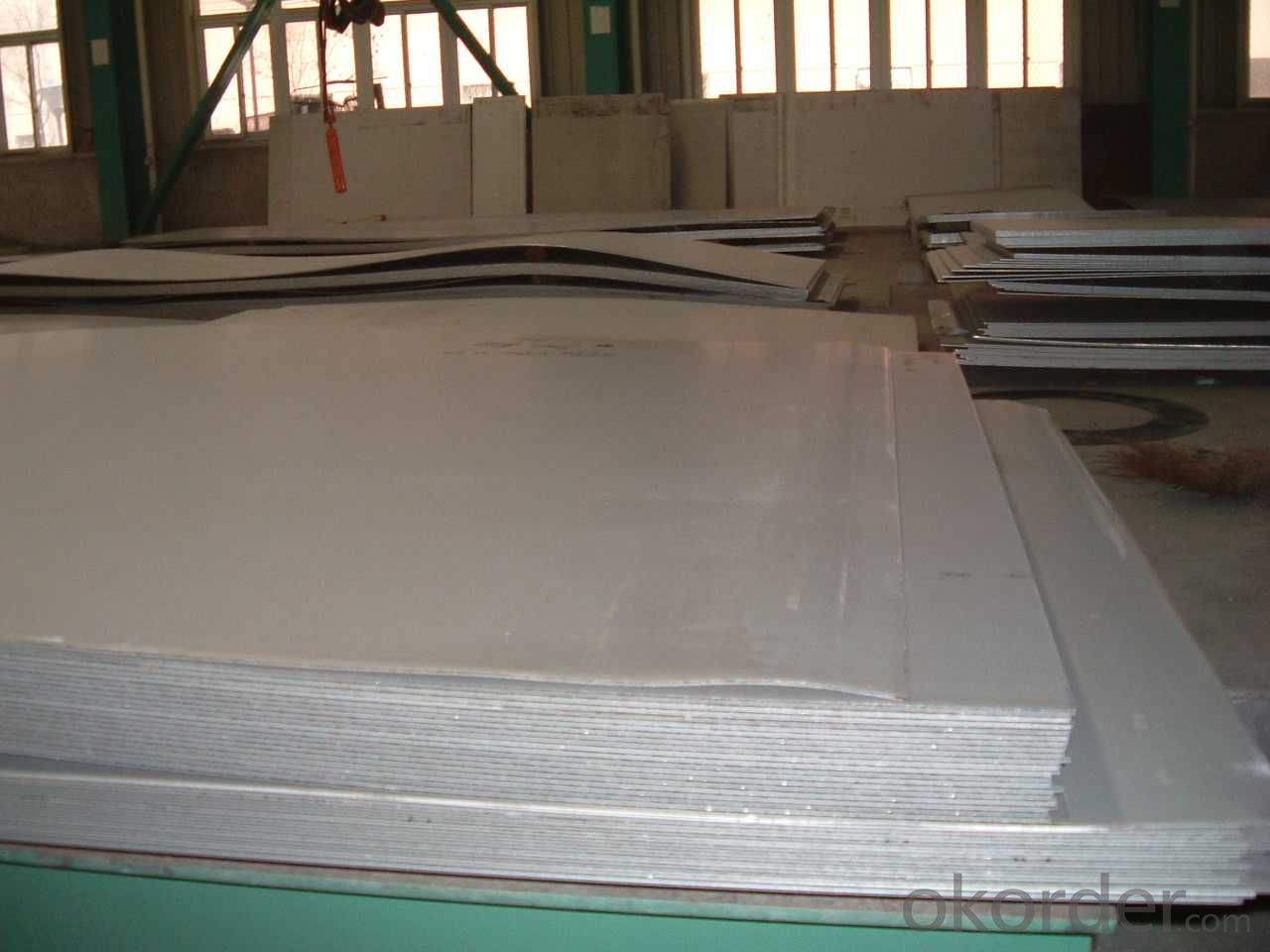
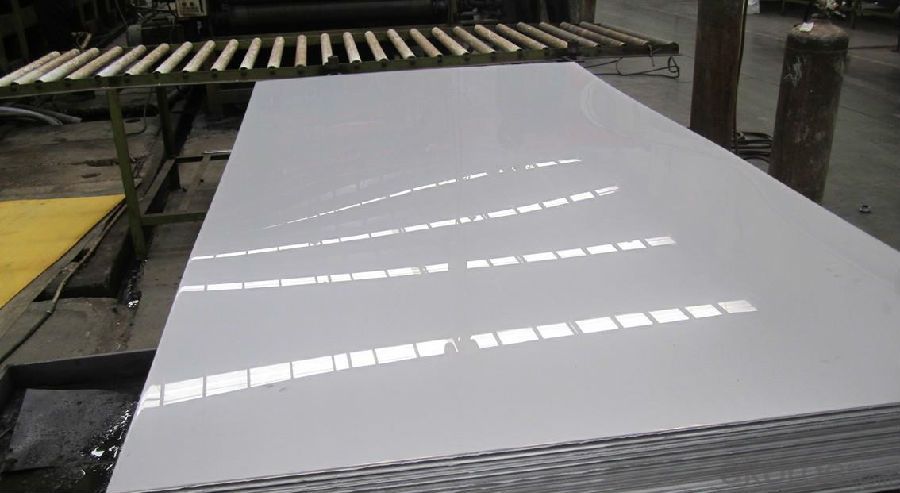
Material of stainless steel:
304,304L,309S,310S,316,316L,316Ti,317L,317L,321,347H,409,409L,410S,420,430,201,202,etc.
Thickness of stainless steel:
From 0.3mm to 100mm
Width of stainless steel:
1000mm,1219mm,1250mm,1500mm,1800mm,2200mm,2500mm or as your requirement
Length of stainless steel:
2000mm,2438mm,2500mm,6000mm,6096mm or as your requirement
Application of stainless steel:
Stainless steel plate applies to construction field, ships building industry, petroleum & chemical industries, war and electricity industries, food processing and medical industry, boiler heat exchanger, machinery and hardware fields. Our company has cooperative relation between the domestic agents. Stainless steel plate can be made accordingto the customers requirements. Fasten delivery. Quality assured.Welcome to order more.
Contacts
If you have any question,please feel free to contact us.
- Q: Can stainless steel sheets be bent?
- Yes, stainless steel sheets can be bent. Stainless steel is a versatile material that can be easily formed into various shapes and configurations, including bends. The ability to bend stainless steel sheets is dependent on the thickness and composition of the material. Thinner sheets are generally more flexible and easier to bend, while thicker sheets may require specialized equipment and techniques. It is important to note that the bending process may cause the stainless steel sheet to lose some of its strength and durability, so careful consideration should be given to the specific application and requirements before attempting to bend stainless steel sheets.
- Q: What are the different types of stainless steel sheet edges?
- The different types of stainless steel sheet edges include mill edge, slit edge, deburred edge, rounded edge, and beveled edge.
- Q: What are the limitations of using stainless steel sheets?
- Some limitations of using stainless steel sheets include their high initial cost, susceptibility to scratching, potential for corrosion in certain environments, and difficulty in shaping complex designs. Additionally, stainless steel sheets are relatively heavy, which can be a disadvantage in certain applications where weight is a concern.
- Q: Can stainless steel sheets be used for column covers?
- Stainless steel sheets are indeed capable of being utilized as column covers. Due to its durability and resistance to corrosion, stainless steel proves to be a suitable material for outdoor applications. Moreover, it offers a contemporary and appealing finish that can enhance the visual appeal of any structure. By effortlessly fabricating and installing stainless steel sheets around columns, a sleek and seamless appearance can be achieved. Furthermore, stainless steel requires minimal maintenance and can be easily cleaned, making it a pragmatic option for column covers that are exposed to outdoor elements.
- Q: Are stainless steel sheets resistant to chemicals and acids?
- Yes, stainless steel sheets are generally resistant to chemicals and acids due to the protective layer of chromium oxide that forms on their surface, which prevents corrosion and damage.
- Q: Can stainless steel sheets be used for countertops or backsplashes?
- Yes, stainless steel sheets can be used for countertops and backsplashes. Stainless steel is a durable material that is resistant to stains, heat, and bacteria, making it an excellent choice for kitchen surfaces. It is easy to clean, maintains its appearance over time, and can withstand heavy use. Stainless steel countertops and backsplashes are commonly used in commercial kitchens due to their hygienic properties, but they are also becoming increasingly popular in residential settings for their sleek and modern look.
- Q: What are the benefits of using embossed stainless steel sheets in elevator interiors?
- Embossed stainless steel sheets offer several benefits in elevator interiors. Firstly, they add a touch of elegance and sophistication, enhancing the overall aesthetics of the elevator. Additionally, the embossed pattern provides a unique texture, creating visual interest and making the interior more visually appealing. Moreover, stainless steel is highly durable, resistant to corrosion and staining, ensuring the longevity and easy maintenance of the elevator interior. Lastly, the reflective properties of stainless steel sheets can help to brighten the space, making it feel more open and spacious.
- Q: What is the thickness range for stainless steel sheets?
- The thickness range for stainless steel sheets can vary depending on the specific grade and application. Generally, stainless steel sheets are available in thicknesses ranging from 0.4mm to 6mm. However, for specialized applications, thinner or thicker sheets may be required. It is important to consult with a supplier or refer to industry standards to determine the appropriate thickness range for a specific project or application.
- Q: What is the strength of stainless steel sheets?
- Several factors contribute to the strength of stainless steel sheets. Firstly, stainless steel is an alloy of iron and chromium, which grants it excellent resistance to corrosion. This corrosion resistance renders stainless steel sheets ideal for various applications, even in environments where they may be exposed to moisture, chemicals, or extreme temperatures. In addition to corrosion resistance, stainless steel sheets possess high tensile strength. Tensile strength refers to the maximum amount of tensile stress a material can endure before failure. Stainless steel sheets have a high tensile strength, enabling them to withstand heavy loads and resist deformation or breaking under pressure. Moreover, stainless steel sheets exhibit exceptional durability and hardness. This means they can endure wear and tear, making them suitable for applications that require long-lasting and robust materials. Stainless steel sheets also have a high resistance to heat, allowing them to maintain their structural integrity even at elevated temperatures. Another advantage of stainless steel sheets is their versatility. They can be shaped and sized in various ways, making them suitable for a wide range of applications. Additionally, stainless steel sheets can be easily formed, welded, and machined, allowing for customization to meet specific requirements. Overall, the strength of stainless steel sheets lies in their corrosion resistance, high tensile strength, durability, hardness, heat resistance, and versatility. These properties establish stainless steel sheets as a reliable and trusted material in numerous industries, including construction, automotive, aerospace, food processing, and many others.
- Q: Are stainless steel sheets good for heat exchangers?
- Yes, stainless steel sheets are excellent for heat exchangers due to their high heat conductivity, corrosion resistance, and durability. They can efficiently transfer heat between fluids and maintain their structural integrity even at high temperatures, making them an ideal choice for various industrial applications.
Send your message to us
Stainless Steel Sheet andPlate with Good Discount
- Loading Port:
- Shanghai
- Payment Terms:
- TT OR LC
- Min Order Qty:
- 10000 m.t.
- Supply Capability:
- 5000000 m.t./month
OKorder Service Pledge
OKorder Financial Service
Similar products
Hot products
Hot Searches
Related keywords
